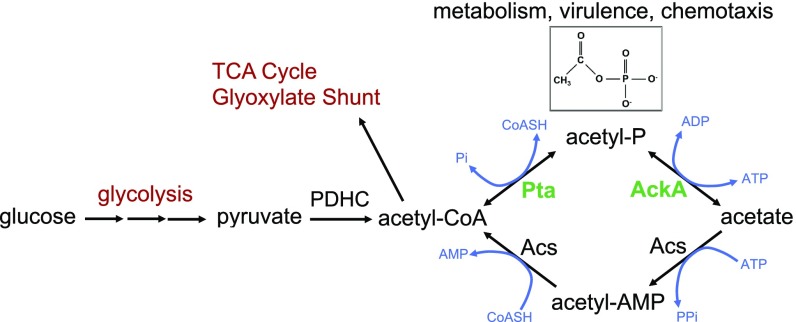Fig. 1.
Acetate activation pathways in E. coli. AckA, acetate kinase; Acs, AMP-forming acetyl-CoA synthetase; PDHC, pyruvate dehydrogenase complex, Pta, phosphotransacetylase; TCA, tricarboxylic acid. Acetyl-phosphate (AcP) is a high-energy form of phosphate and the most unstable phosphorylated compound in the cell. The size of its pool can vary considerably depending on the cell metabolic state and environmental factors (40, 41). AcP can function as a global signal by using either the phosphoryl or acetyl group to regulate many cellular processes such as carbon metabolism, flagellar biogenesis, biofilm development, capsule biosynthesis, and pathogenicity (7).

